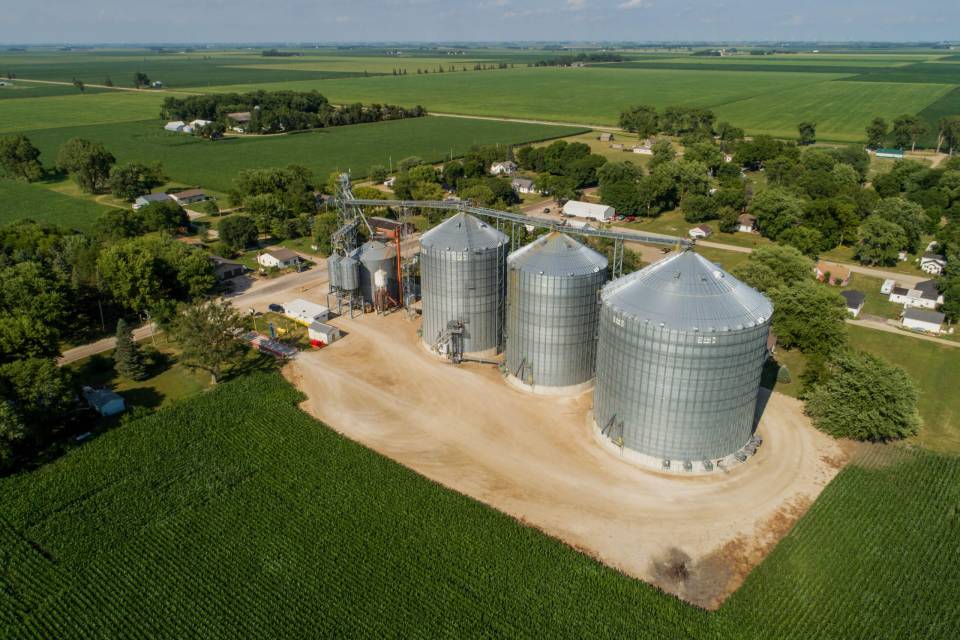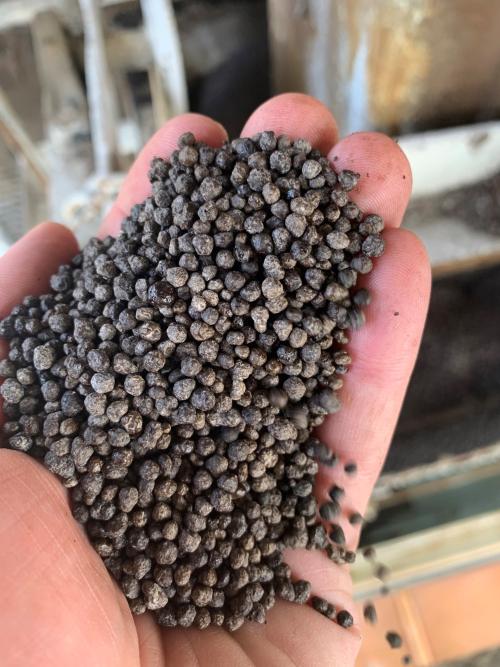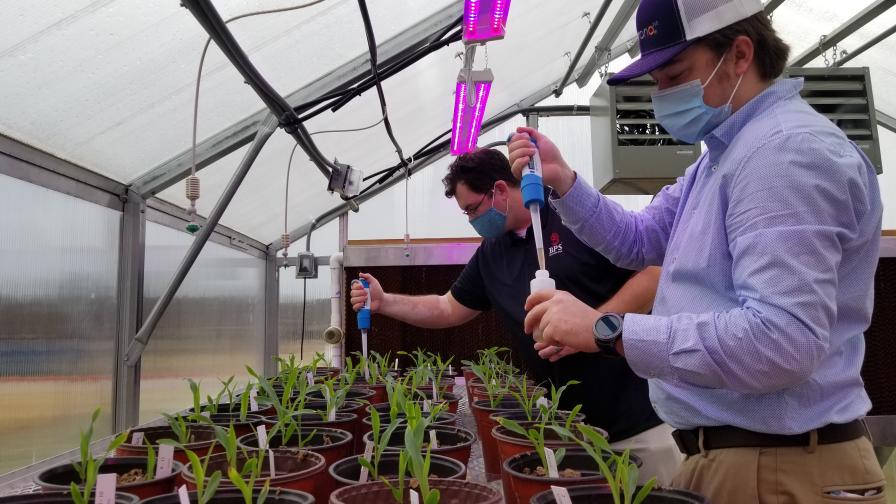The Truth About Nutrient Stewardship
Despite the (at times) scathing headlines in mainstream press, it is hard to argue facts: Nutrient stewardship in American agriculture has been and continues to be a resounding success. After all, American farmers were applying the same or slightly more NPK in 1970 than they do today, yet our corn and soy yields are more than twice as high as what they were 50 years ago.
“That’s a success story we haven’t communicated very well,” Tom Fry, Director of Performance Products at The Mosaic Co., observes. “There’s a perception that because of water quality challenges, farmers are being wasteful or overlapping nutrients, when in fact, we have improved 2X efficiency by applying the right source of fertilizer at the right rate, the right time, and the right place.”
Partly by embodying that 4R nutrient strategy, yields have soared — but what will the next 50 years bring?
“It’s not about yield contests and how much do we push it — it’s about how do we get a return on that fertilizer investment and be profitable,” Fry continues. “Farmers have an innate, built-in incentive to do the most with the least. Retailers feel the same way. They are looking for new technologies, either in the way we apply or placement or ways to keep nutrients available in the crop longer and combine those best practices in ways that improve the outcome for the environment, farmers and ultimately for all of society.”
“Whether it’s the upper Northeast or around the Great Lakes, or even Gulf of Mexico at the mouth of the Mississippi River, I believe that there is a greater level of understanding and awareness of what happens to that nutrition whatever it may be — NPK or micronutrients — when it leaves the applicator,” Josh Byford, Coron Brand Manager at Helena, tells CropLife®. “I think customers today have a much better understanding not only from an environmental standpoint but from an economic standpoint for how to make sure they extract maximum ROI from fertility.”
But the fact is that agriculture has not gotten everything right. As highlighted by water quality issues, there is still room for improvement. A key item being adopted by agricultural players is finding those technologies that provide enhanced efficiency.
Mosaic has focused on its core NPK products in its pursuit, including re-registering its MicroEssentials phosphate-based product in early 2021 as an Enhanced Efficiency Fertilizer (EEF) in all states, which further extends benefits to the grower by potentially qualifying them for conservation and stewardship programs, and other incentives including savings on crop insurance.
What has driven the success of MicroEssentials over the past 12 years, according to Fry, is that it increases uptake of nutrients throughout the season, by converting phosphorus into a more available form, supplying the right balance of zinc, and utilizing smaller zinc particles for better absorption. In addition, it delivers season-long sulfur availability through its combination of both sulfate and elemental sulfur, which oxidizes as the season progresses to provide continuous nutrition for when plants need it.
For this spring, Mosaic, in partnership with Anuvia Plant Nutrients is launching Sus-Terra fertilizer, a bio-based EEF to the market in small quantities, with an eye to grow the product over the next several years, Fry says. “Sus-Terra fertilizer is an EEF, but it has this unique organic matter component, which boosts and balances the soil microbiome in ways we’re just starting to understand. The way the organic matter interacts with the nutrients creates both a fast- and slow-release nitrogen source,” he explains. “It is a very unique technology that we see aligns with where the industry is headed in thinking more around sustainability and regenerative ag.”
Taking the longer view, Mosaic has inked a partnership with BioConsortia to develop and market nitrogen-fixing microbial products for corn, wheat and other major non-legume row crops, while increasing crop yields and grower revenue. It is also collaborating with Sound Agriculture on a nutrient efficiency product to boost yields across major row crops and improve soil health, expected to launch in the U.S. in 2023 before rolling out to additional markets throughout the Americas, with focus on Brazil, Argentina, and Canada.
Optimism Rises
At Helena, utilizing its AGRIntelligence platform and a boots-on-the-ground approach with soil sampling and tissue testing helps grower-customers better realize that understanding, Byford says. “Each area of the country manages placement and movement on 4R a little differently. But utilizing precision agriculture, tied with the nutrition side has been a success for Helena, and I see that growing,” he says.
Byford describes soil sampling via the HyGround platform within AGRIntelligence as the baseline. That is followed up in season with Extractor tissue sampling to determine proper placement and time. “Tissue sampling has been an aspect of business that has really grown — trying to understand what I need, and when do I need it so I can place it,” whether it is applied with a crop protection spray or with a product like Coron Metra, which can supply slow-release nitrogen in season to meet a specific demand within the crop.
Byford adds that supply issues and lagging commodity prices in recent years forced growers to watch every input and every dollar spent on every acre, and that attention to detail and planning will benefit them — and their soils — as favorable conditions return.
“We’re seeing optimism on a level that we haven’t seen in two or three years, but the reality is that it’s probably greater than that,” he says. “When you have a more favorable outlook heading into a cropping season with the vast amount of data and better clarity than we have today on what our crops and markets need, our customers know what takes them to the next level.”
Verdesian Life Sciences sees nitrogen stabilizers growing in 2021 as sentiment improves, commodity prices continue to rebound, and growers look to protect their investment, says Tyrus Oakes, Pipeline Marketing Manager.
This season, Verdesian is rolling out Trident, a new series of premium nitrogen stabilizers for row and specialty crops. The product line offers a combination of its co-polymer and solvent blend with active ingredients NBPT and DCD to protect against all three forms of nitrogen loss: volatilization, nitrification, and denitrification.
The co-polymer solvent blend — technology Oakes says helps Verdesian stand out in a crowded field — stabilizes the formulation and enhances the effectiveness of the NBPT and DCD, driving strong yield performance with a lower overall chemical load to the soil, limiting the impact to soil health. With a flexible use rate of 1.5 to 2.5 quarts per ton of fertilizer, growers may lower the chemical load up to 40% compared to some NBPT-based products while maintaining performance.
“We’re seeing more interest and excitement about some of these (nitrogen stabilizer) products. Verdesian has polymer-based products like NUE-Charge G that have done very well in the market, and we saw an opportunity to layer in additional technologies to reach more growers that have different conditions for their ground,” Oakes tells CropLife, noting that its 2020 field trials across 12 states showed, on average across the Trident line, a 4.6% yield increase over the untreated nitrogen check.
An Adjuvant For Nutrients
Texas-based start-up PureAcre is rolling out Augere, a fertilizer enhancer designed to decrease nitrate leaching, giving row crops a healthier start and allowing for a 104% increase in plant biomass. Based on trials, PureAcre estimates that Augere could provide a 4:1 return-on-investment or higher for corn growers at today’s commodity prices and could reduce nitrate leaching by 99%.
“We’re looking to utilize supramolecular chemistry to enhance fertilizer potential,” John Appel, President, tells CropLife. What is “supramolecular chemistry,” you ask?
David Coorts, Vice President of Technical, explains: “Our technology is basically anchored in a charged silica particle that’s suspended within an aqueous solution. So, when we add a guest chemistry — in the case of Augere, it’s nutrients — that process will form a supramolecular structure. A common recognizable example of a supramolecular structure is DNA. Those four nucleotides by themselves are fairly innocuous, but when they form a double helix you have the foundations of life.”
An important differentiation, he notes, is that they are self-assembling. In simpler terms, the grower or applicator does not need to do anything but add it to the tank.
Appel adds that the technology localized nutrients in addition to prohibiting nitrates from leaching into the soil. “We have a significant amount of data on the outcomes of our technology. We can quantify levels of efficacy with different types of active ingredients,” and it can show people what a supramolecular structure looks like with microscopic images and how various AIs are impacted.
Beyond the obvious environmental benefits, Appel notes, “what we’re really trying to do at the end of the day is to make it easy for the growers to adopt this technology. What makes us unique is that we’re focused on an inert formulation. That inert formulation makes the existing AI better. A grower can take a standard practice program, drop in our technology, and make it perform significantly better.”
“This year is really about validating the performance that we have seen at this point and getting some real-world commercial experience, both from the grower and retail/distribution side,” Coorts adds.








